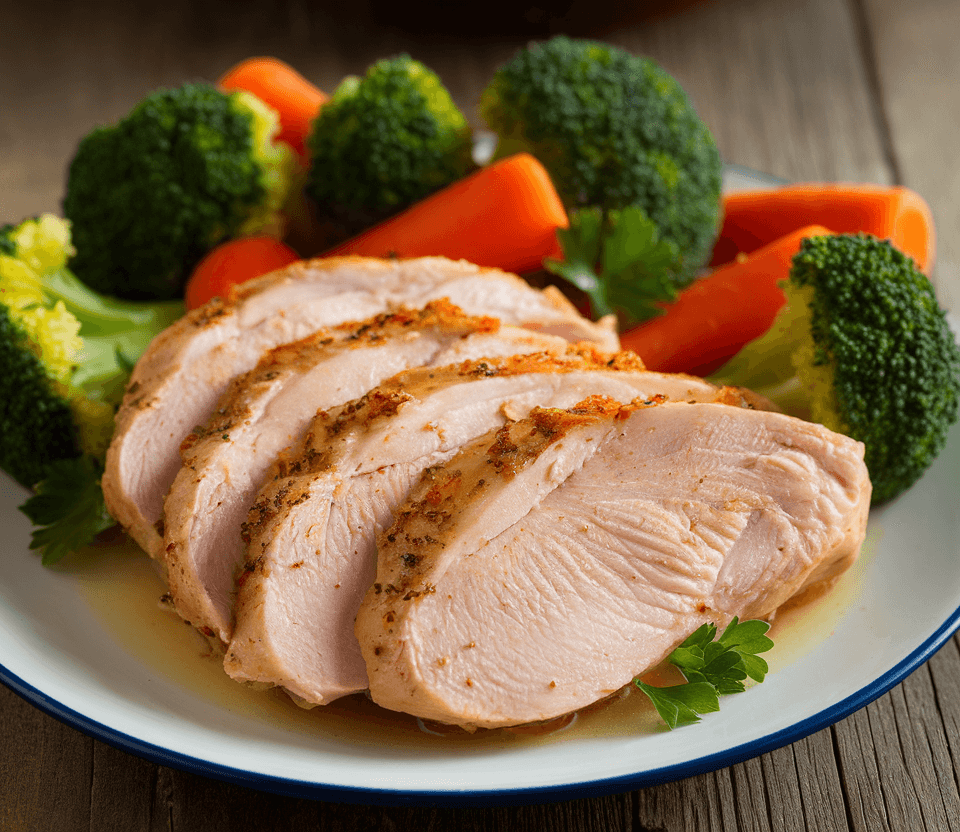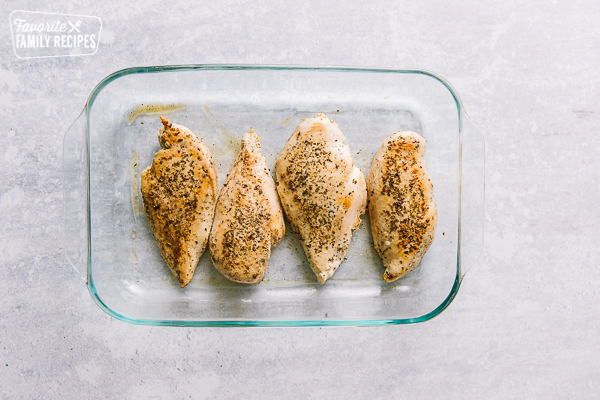Cooking frozen chicken breast so that it turns out juicy and tender can be tricky. It’s easy for frozen chicken breasts to end up dry and stringy after cooking. But with a few simple tricks you can help ensure frozen chicken breast stays moist and delicious.
Thaw Properly
One of the most important steps is thawing the chicken breasts properly before cooking Don’t thaw frozen chicken breasts on the counter or in hot water. This causes the outer surface to thaw quickly while the inside remains frozen Instead, thaw chicken breasts in the refrigerator overnight. Place the frozen chicken in a bowl to catch any drips as it thaws. Thawing in the fridge allows the chicken to defrost slowly and evenly throughout.
Brine the Chicken
For extra juicy chicken, brining is a great technique. To brine chicken breasts, mix 1 cup of salt with 4 cups of water. Submerge the thawed chicken breasts in the brine and let them soak for 30 minutes to 1 hour in the fridge. The salt helps chicken breast retain moisture during cooking. Rinse off the brine before cooking.
Use Low, Even Heat
Be sure to use a lower heat setting when cooking previously frozen chicken breasts. High heat will cause the outside to overcook while the inside continues thawing. Preheat your oven to 325°F. Heat up a skillet to medium or medium low heat when pan frying. The more gently you cook the chicken, the more evenly it will heat and the juicier it will be.
Bake Uncovered
For oven baked frozen chicken breasts, cook them uncovered in a baking dish. Covering traps steam and causes the chicken breasts to dry out. Bake for approximately 30-40 minutes until the internal temperature reaches 165°F. Basting the chicken with a little olive oil or butter half way through will add flavor and moisture.
Pound Chicken Breasts
Pounding chicken breasts to an even thickness will allow them to cook more evenly. Place thawed chicken breasts between two pieces of plastic wrap or parchment paper. Use a meat mallet, rolling pin, or heavy pan to gently pound the thicker parts of the chicken down to match the thinner areas.
Add Moisture
There are several options for adding extra moisture when cooking previously frozen chicken breasts. Placing lemon slices or herbs like oregano, basil, or thyme on top infuses flavor and releases juices. Chicken stock or white wine added to the bottom of the baking dish gives off steam for moisture. Butter basted on top of chicken seeps into the meat.
Don’t Overcook
It can be tempting to cook frozen chicken longer to make sure it’s done, but this dries out the chicken. Use a meat thermometer to check for doneness. When chicken breasts reach an internal temperature of 165°F they are fully cooked. Regardless of size or thickness, don’t over bake or pan fry beyond the point of 165°F.
Let It Rest
Allowing the chicken breasts to rest after cooking is crucial. The internal temperature will rise another 5-10 degrees during resting. Resting also allows the juices to redistribute throughout the meat. Tent the chicken with foil and let sit for 5-10 minutes before cutting. Slice across the grain of the meat for tenderness.
Add a Sauce or Gravy
A flavorful sauce or gravy is an easy way to add juiciness. Pan sauces can be made right in the skillet after cooking. As the chicken rests, sauté aromatics like shallots or garlic in the skillet drippings. Deglaze the pan with chicken broth, white wine or lemon juice and let reduce into a sauce. For gravy, whisk in a tablespoon of flour to thicken.
Get Help from Acid
Marinades containing acidic ingredients like lemon juice, wine, yogurt or vinegar help break down muscle fibers in the chicken. This allows the meat to better absorb moisture and stay juicy. Even 30 minutes in a quick marinade can improve texture.
Cook from Frozen
If you’re short on time, it is possible to cook frozen chicken breasts without thawing first. This takes longer, about 50 minutes in a 350°F oven. Bake uncovered and baste periodically with pan drippings. Cook until thermometer reads 165°F. The advantage is moisture from the ice crystals in the chicken keeps the meat juicy as it cooks.
Go for Boneless, Skinless
Chicken breasts with the bone and skin intact are more flavorful. But when cooking frozen chicken breasts, boneless and skinless cuts will be much more moist. The bones and skin act as insulation slowing the defrosting process of frozen chicken. Stick to boneless, skinless chicken breasts for the most tender and juicy results from the freezer.
Use a Meat Mallet
Pounding out frozen chicken breasts before cooking ensures they cook evenly. Sometimes one end of a frozen chicken breast defrosts quicker than the other. Use a meat mallet or heavy pan to gently pound any thicker areas of partially thawed chicken. Flatten to an even thickness so it cooks at the same rate.
Cook Low and Slow
Low, gentle heat allows frozen chicken time to thaw and cook through without overcooking. For oven baked chicken, keep the temperature around 325°F. Check for doneness after 30 minutes. For pan-fried chicken, use medium-low heat. It may take up to 12 minutes per side as the frozen inside slowly defrosts. Be patient and keep heat low.
Inject Flavor
Chicken injectors allow you to infuse flavor and moisture deep into frozen chicken breasts. Injectors are syringe-like tools for piercing chicken and injecting marinades or broths into the meat. Rotate and inject chicken breasts in several places to distribute liquid evenly. Popular marinades are lemon juice, garlic, herbs and olive oil.
Consider Sous Vide
Cooking frozen chicken sous vide – sealed in bags immersed in warm water – allows the meat to gently thaw and cook to tender perfection. Pre-frozen chicken can go straight into the water bath still frozen. Sous vide machines hold water temperature precisely so food doesn’t overcook. Chicken cooks low and slow from frozen state for amazingly juicy results.
Use a Meat Thermometer
Take the guesswork out of cooking frozen chicken breasts by using an instant read meat thermometer. Chicken is safely cooked through at 165°F. Thermometers inserted into the thickest part ensure chicken reaches food safe doneness while minimizing overcooking. Regardless of size, frozen chicken is done at 165°F.
Follow these tips and tricks for cooking juicy, tender frozen chicken breasts every time. Proper thawing, brining, temperature control and monitoring doneness produces the best results. With a little practice, frozen chicken can be nearly as moist and delicious as fresh.

The Best Ways to Cook Frozen Chicken
If you’ve got a little extra time and no fancy gadgets, the oven is your best friend for cooking frozen chicken. Here’s how I do it:
- Preheat the oven to 350°F.
- Place frozen chicken breasts on a baking sheet. I recommend using chicken breasts that are about 1 inch thick or less to ensure even cooking. Thicker pieces may require more time and a lower temperature.
- Rub each piece with a little butter or olive oil. Trust me, this step makes a world of difference in flavor and texture.
- Sprinkle your favorite seasonings over the chicken.
- Bake for 30-45 minutes, or until the internal temperature of the chicken reaches 165°F. Use a meat thermometer to check—it’s the most reliable way to ensure doneness.
Tip: To boost flavor, try marinating the chicken for a few minutes after rubbing it with oil. Even a quick coating of garlic powder, paprika, and a drizzle of lemon juice can transform the dish.

Air Fryer Method (Quick and Crispy)
The air fryer is a game-changer for busy nights. It cooks chicken faster than the oven and gives it a slight crisp on the outside. Here’s how I do it:
- Preheat the air fryer to 360°F.
- Mix together ½ cup of panko breadcrumbs, ½ cup of grated Parmesan cheese, and a pinch of salt and pepper. You can add garlic powder, paprika, or Italian seasoning if you like.
- Rub each chicken piece with butter or olive oil, then coat with the breadcrumb mixture, pressing gently to help it stick.
- Place the chicken in the air fryer basket, ensuring there’s space between pieces for even cooking.
- Cook for 10 minutes, flip the chicken, and cook for an additional 5-10 minutes. Check that the internal temperature reaches 165°F before serving.
Tip: For an extra crispy finish, lightly spray the coated chicken with cooking spray before air frying.
Juicy and Tender Chicken Breast
FAQ
How to cook frozen chicken breasts without drying it out?
– Place the frozen chicken breasts in a single layer in a baking dish. You can drizzle a little olive oil over them and season with salt, pepper, and any other spices you prefer. Bake: – Cover the baking dish with aluminum foil (this helps retain moisture). – Bake in the preheated oven for about 30-45 minutes.
How to cook frozen chicken so it’s juicy?
I put meat tenderizer on the chicken then placed the frozen block of chicken in the roaster and started at 200 degrees then every 30 minutes turn up 50 degrees until I get to 350. After 3 hours I poke it with a fork to see if its done . You can elevate the chicken to keep it out of the juices. Makes it less greasy.
How do you keep frozen chicken breast moist?
Rather than skimp on juiciness, simply add a form of fat to your post-freezer chicken breasts. A fatty supplement helps revive your poultry with necessary, added moisture, combatting the impact of the freezer. To pull off this technique, you can brush frozen chicken breasts with a form of fat before baking.Jan 12, 2024
How to make chicken breast more juicy?
To make chicken breasts more juicy, try brining or marinating them before cooking. Pounding them to an even thickness or resting them after cooking can also help.
